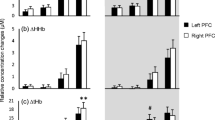Abstract
The present study was designed to determine the specific physiological effects of two experimental conditions, smoking and mock smoking (puffing on an unlit cigarette), with smokers and nonsmokers. Two groups (smokers versus nonsmokers) with nine subjects each (five females, four males) participated in the present study. Physiological measures included alveolar carbon monoxide (COa) levels, skin resistance, heart rate, and finger temperature across a standard session sequence. The results of the COa assessment indicated increments only in the smoking condition. Multivariate analyses of variance (MANOVA) across skin conductance, heart rate, and hand temperature were initially performed, followed by univariate analyses of variance (ANOVA) for each physiological measure. Post hoc analyses were performed using orthogonal polynomial trend analyses. A number of significant differences were found. Discussion focuses on the need for experimental controls related to cigarette smoking in psychophysiological research in general, and in hand temperature biofeedback training in particular.
Similar content being viewed by others
References
Agué, C. (1974). Cardiovascular variables, skin conductance and time estimation: Changes after the administration of small doses of nicotine.Psychopharmacologia, 37 109–125.
Burch, G. E., & DePasquale, N. P. (1961). A study of variables which offer difficulty in the evaluation of the peripheral vascular response to cigarette smoking.Journal of Laboratory and Clinical Medicine, 58 694–703.
Elliott, R., & Thysell, R. (1968). A note on smoking and heart rate.Psychophysiology, 5 280–283.
Frankenhauser, M., Myrsten, A. L., & Post, B. (1970). Physiological reactions to cigarette smoking.Scandinavian Journal of Psychology, 2 237–245.
Frankenhauser, M., Myrsten, A. L., Waszack, M., Neri, A., & Post, B. (1968). Dosage and time effects of cigarette smoking.Psychopharmacologia, 13 311–319.
Frederikson, L. W., & Martin, J. E. (1979). Carbon monoxide and smoking behavior.Addictive Behaviors, 4 21–30.
Furey, S. A., Schanning, J., Spoont, S., & Birkhead, N. E. (1969). The comparative effects on circulation of smoking tobacco and lettuce leaf cigarettes.Angiology, 18 218–223.
Gilbert, D. G. (1979). Paradoxical tranquilizing and emotion-reducing effects of nicotine.Psychological Bulletin, 86 643–661.
Grass Instruments Company. (1970).Operations manual for the model 7P4 tachagraph. Quincy, Massachusetts: Author.
Jacobson, A. M., Hackett, T. P., Surman, O. S., & Silverberg, E. L. (1973). Raynaud phenomenon treatment with hypnotic and operant techniques.Journal of the American Medical Association, 225 739–740.
Jones, R. H., Ellicott, M. F., Cadigan, J. B., & Gaensler, E. A. (1958). The relationship between alveolar and blood carbon monoxide concentrations during breathholding.Journal of Laboratory and Clinical Medicine, 51 553–564.
Lykken, D. T., & Venables, P. H. (1971). Direct measurement of skin conductance: A proposal for standardization.Psychophysiology, 8 656–672.
Moss, R. A., & Prue, D. M. (1982). Research on nicotine regulation.Behavior Therapy, 13 31–46.
Roth, G. M., McDonald, J. B., & Sheard, C. (1945). The effects of smoking cigarettes and the intravenous administration of nicotine on the heart and peripheral blood vessels.Medical Clinics of North America, 29 949–957.
Solomon, R. L., & Corbit, J. D. (1974). An opponent-process theory of motivation: Temporal dynamics of affect.Psychological Review, 81 119–145.
Surwit, R. S. (1973). Biofeedback: A possible treatment for Raynaud's disease.Seminars in Psychiatry, 5 483–490.
Turin, A., & Johnson, W. G. (1976). Biofeedback therapy for migraine headaches.Archives of General Psychiatry, 33 517–519.
Author information
Authors and Affiliations
Rights and permissions
About this article
Cite this article
Moss, R.A., Hammer, D. & Sanders, S.H. The physiological effects of cigarette smoking: Implications for psychophysiological research. Biofeedback and Self-Regulation 9, 299–309 (1984). https://doi.org/10.1007/BF00998974
Issue Date:
DOI: https://doi.org/10.1007/BF00998974




